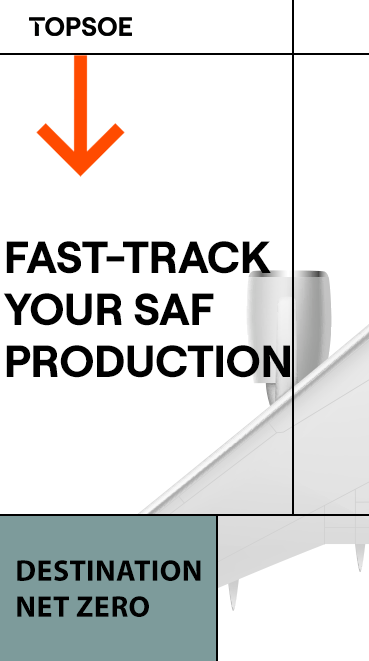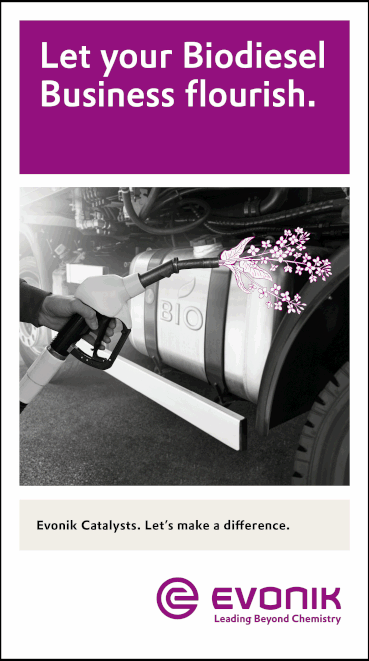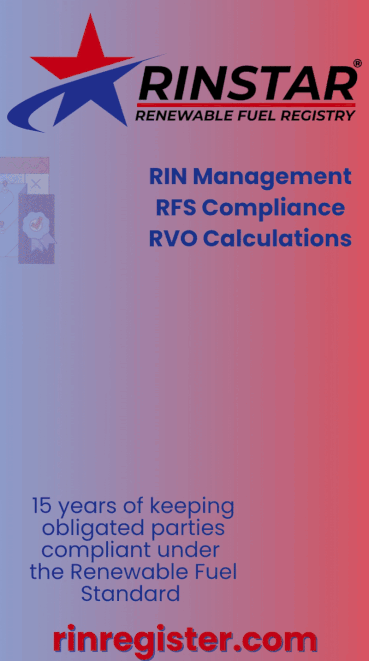Feedstock Theft & Fraud
- Ron Kotrba
- Jun 12, 2023
- 7 min read
Updated: Jun 15, 2023

Stolen used cooking oil and palm oil fraudulently disguised as waste feedstock are making headlines, but traceability platforms can help curtail illegal activity.
Used cooking oil (UCO) theft is nothing new. Ever since the material, which at one time restaurants paid to get rid of, became sought after as low carbon-intensity (CI) feedstock to produce biodiesel and, more recently, renewable diesel and sustainable aviation fuel (SAF), there have been unsavory characters stealing in the dark of night what isn’t theirs to make a fast, illegal buck. But a recent case of UCO theft in New York implicating a highly respected biodiesel producer in Pennsylvania, along with salacious allegations of fraudulent UCO exports and doubtfully innocently “mislabeled” waste-based biodiesel produced from contentious palm oil instead of byproducts, have once again brought the high-profile specter of shame on these otherwise noble sectors.
This April, six individuals were arrested and charged with conspiracy and the transportation and sale of stolen UCO in interstate commerce. According to the complaint, the defendants conspired to commit a series of UCO thefts from numerous restaurants in and around Monroe County, New York.
A year ago, in April 2022, police encountered several of the defendants pumping UCO in the middle of the night out of privately-owned holding tanks and into box trucks equipped with storage tanks. The deputies followed the box trucks to warehouses in Rochester, New York, where they observed the defendants offloading the oil.
During the execution of search warrants, deputies found more than 12,000 gallons of UCO worth over $73,000. Discovered records showed that the stolen oil was sold and shipped to a biodiesel refinery in Erie, Pennsylvania. Investigators traced two specific oil shipments of 95,320 pounds from the defendants’ warehouse in Rochester to the Pennsylvania plant. The defendants were paid $60,051 for these two shipments, or roughly $4.70 a gallon.
Chris Peterson, president of Hero BX, confirmed with Biobased Diesel™ that this plant in Erie, Pennsylvania, was in fact his facility. “We had no idea that the oil was stolen,” Peterson says. “It was purchased through one of our large-scale aggregators. It is our policy that we only buy directly from collectors we know or historically from aggregators or brokers with strong reputations.”
Peterson says the company unknowingly bought two 46,000-pound truckloads of this stolen oil. This sounds like a lot, but on any given day Hero BX can process an average of 45 truckloads of oil.
“As far as I know, both we and the aggregator are in the clear,” says Peterson when asked whether Hero BX will be in any trouble for innocently purchasing stolen UCO. “We had an initial interview with Homeland Security, and we walked through our process with them. They asked, ‘How would you ever know?’ and we agreed.”
According to companies like Veriflux and Reiter Software, which offer feedstock-traceability platforms, there are new ways to know.
“Our software addresses this a few different ways,” says Dani Charles, co-founder of Veriflux. “One is traceability start to finish, not just for UCO collection but all the way down the supply chain to the producer.”
Using the Veriflux system, a producer can log in and see where their product is coming from and how much. “When you have that visibility from the database side, we can reconcile irregularities,” he says. “Also, there’s higher fidelity data like GPS, determining a collector was where they said they were and when, and whether they are the validated collector for that particular restaurant.”
Kristoff Reiter, CEO of Reiter Companies, says there are a few different technology offerings this year. “The problem is that when oil’s worth $3.50 to $5 a gallon, it’s worth thieves’ time to make up records,” he says. In that case, what becomes important is analysis of the associated metadata to gauge the record’s authenticity. “How far apart were the data-entry intervals, were devices GPS-confirmed at those locations, does this data fall in line with standard data?” Reiter says. “Those are things we look at to rate a record’s quality and legitimacy. It’s the analysis that creates more security.”
It’s well known that organized crime is embedded in the UCO trade. Sources say the business model of these syndicates is simple: They build large oil-processing plants in major cities through which “every Tom, Dick and Harry” can offload hundreds or thousands of gallons of stolen (“dirty”) UCO, and the plant turns around and sells it as legitimate (“clean”) feedstock. It’s a UCO-laundering scheme, basically. As a cover, some players have a few legitimate accounts, but it’s never close to the volume they’re selling. “Everyone knows the game, but their oil keeps moving with enough plausible deniability,” one source says.
‘UCO’ from Asia to US
In February, the International Council on Clean Transportation issued a whitepaper on potential fraudulent UCO exports from Asia to the U.S. due to demand for low-CI feedstock created in American low-carbon fuel policies.
“It is important to remember that the physical and chemical nature of waste oil and drop-in hydrotreated fuels makes it possible to disguise virgin vegetable oil as waste oil,” ICCT stated. “Indeed, there have been documented cases of waste-oil fraud in the United States [and Europe] already … UCO is nearly indistinguishable from virgin vegetable oil and it is difficult for auditors to detect fraud using chemical fuel testing.”
The ICCT report notes that Asian countries export most of the world’s UCO. “While import volumes fluctuate annually, the UN Comtrade Database shows that approximately 15 percent of the UCO imported by the United States comes from Asia.”
Future import demand from the U.S. and other locations such as Europe will likely exceed the potential for genuine UCO exports from Asia, the report states. “We estimate that U.S. policy incentives could promote the import of 8.9 million metric tons of UCO into the United States in 2030 due to the [3-billion-gallon by 2030] SAF [Grand Challenge] mandate alone. That is a sizeable amount compared to the UCO that we estimate is currently collected in [China, India, Indonesia, Japan, Malaysia and South Korea], which is in the range of 3.7 million to 5 million tons.”
It should be noted that ICCT advocates for the capping of how much UCO and animal fats should be allowed under certain biofuel policies, a move that many in the industry do not support, but which the organization believes will help curtail fraud.
Reiter says there’s a lot of “UCO” containers entering the U.S. from China that aren’t actually UCO. “Everyone I know in this business gets calls offering these containerloads,” he says. “The quality on them is way too good to be UCO, with 2 percent free fatty acids and an iodine value that is exactly that of palm oil.”
‘Advanced Biodiesel’ from China to EU
In April, the International Sustainability and Carbon Certification system issued a notification about communications from stakeholders expressing concerns over a surge of “advanced biodiesel”—or biodiesel made from EU-approved waste feedstocks—imported from China “and produced from waste and residue materials that are at least partly supplied from Indonesia and Malaysia.”
This sharp increase began late last year and peaked this February, ISCC noted, “with serious implications for the European biofuels market and indications pointing to a potentially dubious or fraudulent origin of these trade flows.”
While biofuels made from virgin palm oil are not allowed under U.S. and EU biofuel programs due to sustainability issues and deforestation perceived to be linked with palm-oil plantations, byproducts from palm processing, such as palm oil mill effluent (POME), may qualify as waste under some policies. But what ISCC points out is that some of this “waste-based biodiesel” coming to the EU from China is labeled as having been manufactured in part from POME originating in Indonesia or Malaysia but instead may be made from palm oil.
“ISCC has already intensified its work on mitigation measures,” the organization stated. “As a result, ISCC’s integrity program has focused on Asia since last year and additional integrity assessments have been conducted at points of origin.”
Part of the fortified requirements include a designated self-declaration for POME oil, a mandatory 100 percent audit for respective points of origin and guidelines for plausible yields. The idea behind this is a palm-oil mill processing X tons of palm should only theoretically be capable of producing Y tons of POME. If POME yields exceed plausible limits, then this is a red flag.
“Implausible quantities of material … that cannot be verified by the auditor will be considered as a critical nonconformity and will result in withdrawal of the certificate,” ISCC stated. “False declaration of materials on sustainability declarations will be regarded as a critical nonconformity subject to certificate withdrawal, and further measures regarding points of origin will be implemented.”
The organization added that, “Since [March], after being alerted to certain players suspected of committing fraudulent activity, we immediately carried out unannounced integrity audits at the companies concerned,” ISCC stated. “In a second step, we are conducting a further 70 unannounced integrity audits at processing units in China and Singapore.”
Charles says, “What makes this so tough is how complex the supply chain is, which also makes designing software difficult. In some cases, supply chains are linear while others involve aggregators, multiple processors, and multiple collectors rolling under those processors. If there’s a bad actor upstream, even a small one, then you’re running the risk of this rolling down to the producer.”
Optimists can see the good in these unfortunate incidents. “It’s bad that it’s happening, but it’s good because there’s more market awareness,” Charles says. “What makes it so challenging is there’s just so much feedstock and collection points—20,000 or 30,000 tons of UCO alone can reflect 50,000 to 60,000 points of origin. That’s a lot of data. That’s why it’s hard to facilitate end-to-end traceability. The only way to do it is with software. It isn’t a solution, it’s the solution.”
In general, some feedstock records might look imperfect because they’re occasionally missing some metadata, but should they be excluded flat out? “No,” Reiter says, “because there are also in-betweens. There’s good, imperfect and in-between data. So, our system (Reiter Software’s Cooking Oil Service Tier, or COST) will work more like a credit market with triple As, single As, double Bs. Records will have a rating. I plan to define and publish the criteria by which we will score them, to be transparent.”
Other than criminal actors, most stakeholders in this space are well-intentioned, Charles says. “They understand [these incentives and credits come from] taxpayer dollars, so collectively we need to move the industry forward with more transparency around this, and more data sharing,” he says. “But actual implementation is the challenge. You need to have buy-in from industry and government. With better traceability, however, theft and fraud will ultimately be eliminated by market dynamics and enforcement. But it’ll take time to get there. We just need to have the patience to work collectively.”

Author: Ron Kotrba
Editor, Biobased Diesel™
218-745-8347

























-RKstandin.jpg)





